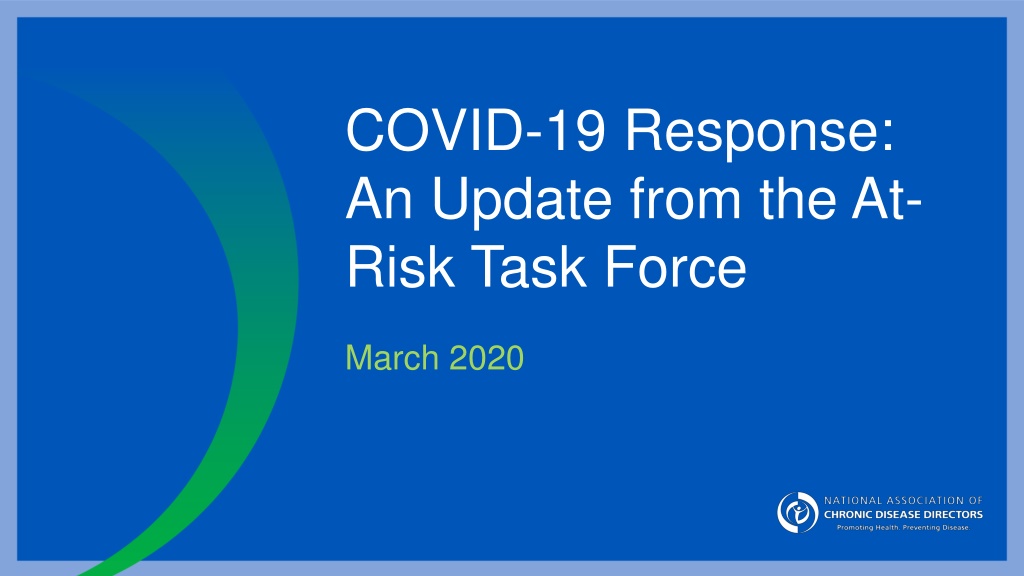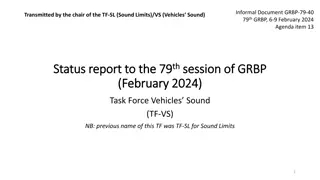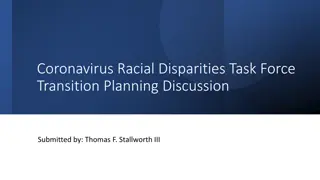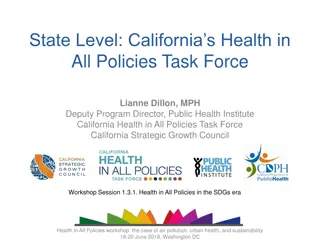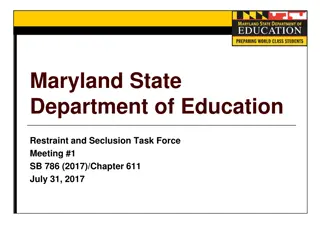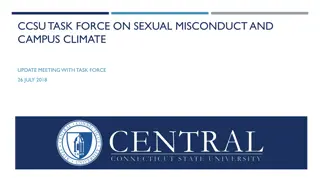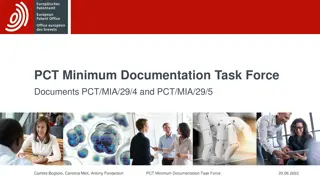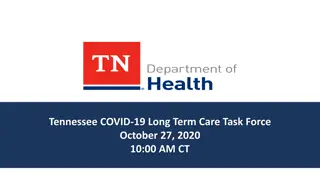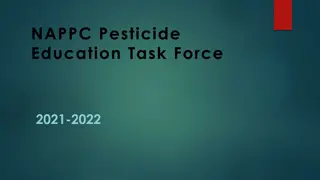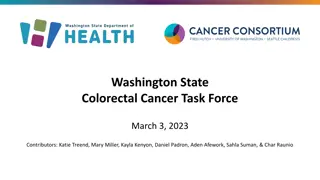COVID-19 Response: Update from the At-Risk Task Force March 2020
Georgina Peacock, MD, MPH, FAAP leads the Division of Human Development and Disability at the CDC, focusing on optimizing health outcomes for various populations, including children with disabilities and adults at risk. The update discusses COVID-19 spread, symptoms, and complications, emphasizing the importance of prevention and awareness.
Download Presentation

Please find below an Image/Link to download the presentation.
The content on the website is provided AS IS for your information and personal use only. It may not be sold, licensed, or shared on other websites without obtaining consent from the author. Download presentation by click this link. If you encounter any issues during the download, it is possible that the publisher has removed the file from their server.
E N D
Presentation Transcript
COVID-19 Response: An Update from the At- Risk Task Force March 2020
Georgina Peacock, MD, MPH, FAAP is the Division Director for the Division of Human Development and Disability (DHDD) at the National Center on Birth Defects and Developmental Disabilities (NCBDDD). Dedicated to the health and development of children and adults across the lifespan, she applies her personal passion and knowledge to a critical leadership position at the Centers for Disease Control and Prevention (CDC). In her role at DHDD, Dr. Peacock directs CDC s public health approach, which helps children and adults with disabilities get the most out of life by supporting programs, surveillance, research and policies that facilitate better healthcare, increases in accessibility, and inclusion. DHDD also works to optimize child development for those at risk for high-impact conditions so children can reach their full potential in life. Dr. Peacock oversees a division staff focused on the best health outcomes for the following populations: Infants and children with attention-deficit/hyperactivity disorder, fragile X syndrome, hearing loss, autism spectrum disorders, and Tourette Syndrome Infants and children at risk for developmental delays, disabilities, and mental disorders, adults living with disabilities, including those with intellectual, functional, mobility and cognitive limitations. Georgina Peacock, MD, MPH, FAAP Director, Division of Human Development and Disability Centers for Disease Control and Prevention
COVID-19 Conversation with National Association of Chronic Disease Directors Georgina Peacock, MD, MPH, FAAP At Risk Task Force Lead For more information: www.cdc.gov/COVID19
Current Situation As of noon March 25, 2020
COVID-19: How It Spreads The virus is thought to spread mainly from person-to-person Between people who are in close contact with one another (within about 6 feet) Through respiratory droplets produced when an infected person coughs or sneezes These droplets can land in the mouths or noses of people who are nearby or possibly be inhaled into the lungs
COVID-19: Symptoms & Complications Symptoms may include Fever Cough Shortness of breath Estimated incubation period 2 to 14 days Complications may include Pneumonia Respiratory failure Multisystem organ failure Wide range of illness severity has been reported Mild to severe illness Can result in death
People who are at higher risk for severe illness People aged 65 years and older People who live in a nursing home or long-term care facility Other high-risk conditions could include: People with chronic lung disease or moderate to severe asthma People who have heart disease with complications People who are immunocompromised including cancer treatment People of any age with severe obesity (body mass index [(BM]I) 40) or certain underlying medical conditions, particularly if not well controlled, such as those with diabetes, renal failure, or liver disease might also be at risk People who are pregnant should be monitored since they are known to be at risk with severe viral illness, however, to date data on COVID-19 has not shown increased risk Many conditions can cause a person to be immunocompromised, including cancer treatment, bone marrow or organ transplantation, immune deficiencies, poorly controlled HIV or AIDS, and prolonged use of corticosteroids and other immune weakening medications
COVID-19: At Risk Task Force Technical assistance and guidance for people at higher risk for severe illness and vulnerable populations At-risk medical conditions At-risk vulnerable populations Social and behavioral health Recent MMWR publication: Severe Outcomes Among Patients with Coronavirus Disease 2019 (COVID-19) United States, February 12 March 16, 2020 8 out of 10 deaths reported in US are among 65+
Resources If You are at Higher Risk: https://www.cdc.gov/coronavirus/2019-ncov/specific-groups/high- risk-complications.html Stress and coping: https://www.cdc.gov/coronavirus/2019-ncov/prepare/managing-stress- anxiety.html Community: https://www.cdc.gov/coronavirus/2019-ncov/community/index.html Health Care Professionals: https://www.cdc.gov/coronavirus/2019-nCoV/hcp/index.html Health Care Facilities: https://www.cdc.gov/coronavirus/2019-ncov/healthcare- facilities/index.html Long Term Care Facilities: https://www.cdc.gov/coronavirus/2019-ncov/healthcare- facilities/prevent-spread-in-long-term-care-facilities.html
NACDD Contact Jeanne Alongi Director of Public Health Practice National Association of Chronic Disease Directors jalongi@chronicdisease.org
